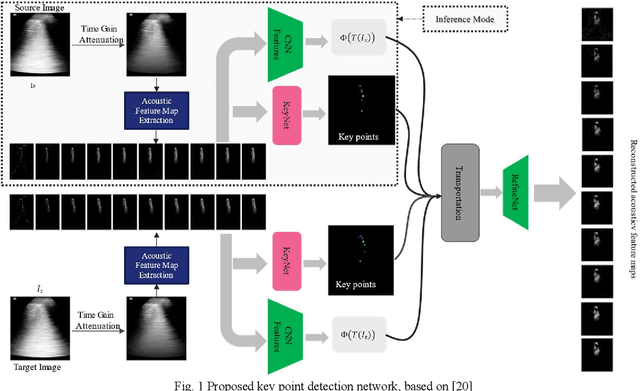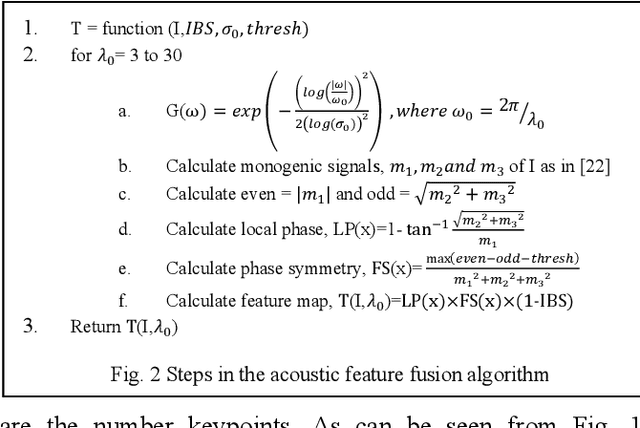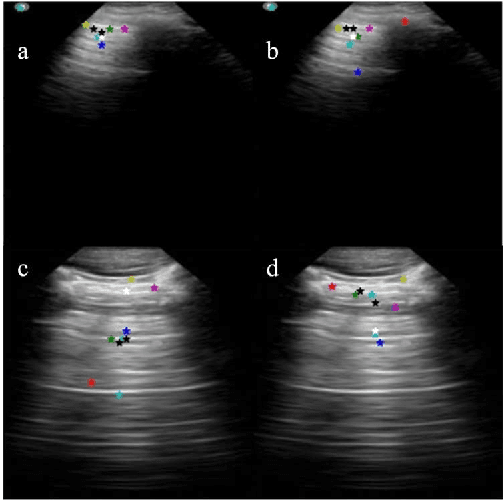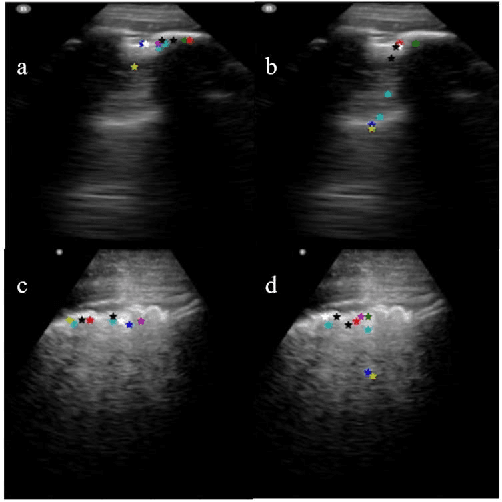Learning the Imaging Landmarks: Unsupervised Key point Detection in Lung Ultrasound Videos
Paper and Code
Jun 13, 2021



Lung ultrasound (LUS) is an increasingly popular diagnostic imaging modality for continuous and periodic monitoring of lung infection, given its advantages of non-invasiveness, non-ionizing nature, portability and easy disinfection. The major landmarks assessed by clinicians for triaging using LUS are pleura, A and B lines. There have been many efforts for the automatic detection of these landmarks. However, restricting to a few pre-defined landmarks may not reveal the actual imaging biomarkers particularly in case of new pathologies like COVID-19. Rather, the identification of key landmarks should be driven by data given the availability of a plethora of neural network algorithms. This work is a first of its kind attempt towards unsupervised detection of the key LUS landmarks in LUS videos of COVID-19 subjects during various stages of infection. We adapted the relatively newer approach of transporter neural networks to automatically mark and track pleura, A and B lines based on their periodic motion and relatively stable appearance in the videos. Initial results on unsupervised pleura detection show an accuracy of 91.8% employing 1081 LUS video frames.
 Add to Chrome
Add to Chrome Add to Firefox
Add to Firefox Add to Edge
Add to Edge